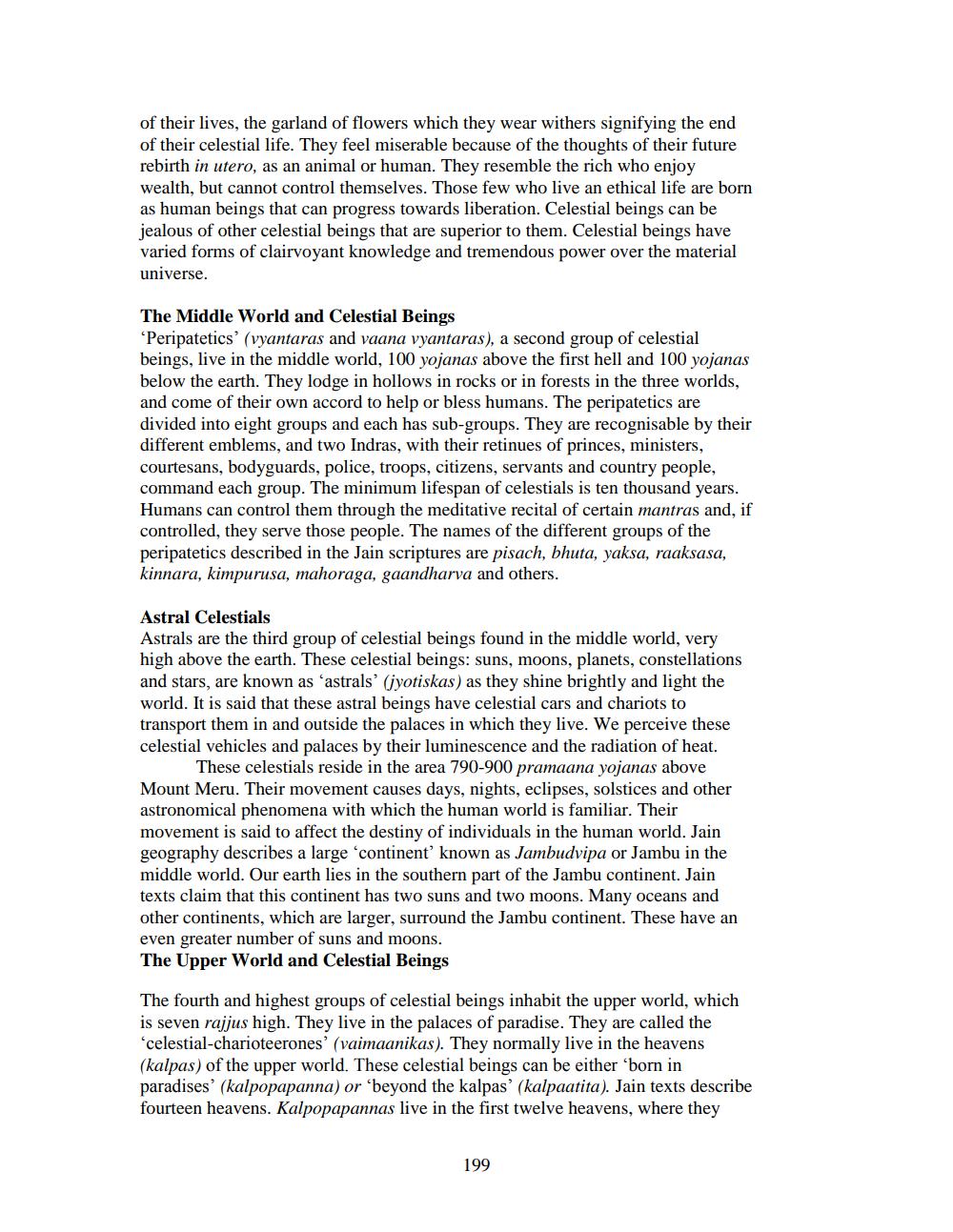________________
of their lives, the garland of flowers which they wear withers signifying the end of their celestial life. They feel miserable because of the thoughts of their future rebirth in utero, as an animal or human. They resemble the rich who enjoy wealth, but cannot control themselves. Those few who live an ethical life are born as human beings that can progress towards liberation. Celestial beings can be jealous of other celestial beings that are superior to them. Celestial beings have varied forms of clairvoyant knowledge and tremendous power over the material universe.
The Middle World and Celestial Beings
Peripatetics' (vyantaras and vaana vyantaras), a second group of celestial beings, live in the middle world, 100 yojanas above the first hell and 100 vojanas below the earth. They lodge in hollows in rocks or in forests in the three worlds, and come of their own accord to help or bless humans. The peripatetics are divided into eight groups and each has sub-groups. They are recognisable by their different emblems, and two Indras, with their retinues of princes, ministers, courtesans, bodyguards, police, troops, citizens, servants and country people, command each group. The minimum lifespan of celestials is ten thousand years. Humans can control them through the meditative recital of certain mantras and, if controlled, they serve those people. The names of the different groups of the peripatetics described in the Jain scriptures are pisach, bhuta, yaksa, raaksasa, kinnara, kimpurusa, mahoraga, gaandharva and others.
Astral Celestials Astrals are the third group of celestial beings found in the middle world, very high above the earth. These celestial beings: suns, moons, planets, constellations and stars, are known as 'astrals' Gjyotiskas) as they shine brightly and light the world. It is said that these astral beings have celestial cars and chariots to transport them in and outside the palaces in which they live. We perceive these celestial vehicles and palaces by their luminescence and the radiation of heat.
These celestials reside in the area 790-900 pramaana yojanas above Mount Meru. Their movement causes days, nights, eclipses, solstices and other astronomical phenomena with which the human world is familiar. Their movement is said to affect the destiny of individuals in the human world. Jain geography describes a large 'continent' known as Jambudvipa or Jambu in the middle world. Our earth lies in the southern part of the Jambu continent. Jain texts claim that this continent has two suns and two moons. Many oceans and other continents, which are larger, surround the Jambu continent. These have an even greater number of suns and moons. The Upper World and Celestial Beings
The fourth and highest groups of celestial beings inhabit the upper world, which is seven rajjus high. They live in the palaces of paradise. They are called the 'celestial-charioteerones' (vaimaanikas). They normally live in the heavens (kalpas) of the upper world. These celestial beings can be either 'born in paradises' (kalpopapanna) or 'beyond the kalpas' (kalpaatita). Jain texts describe fourteen heavens. Kalpopapannas live in the first twelve heavens, where they
199




